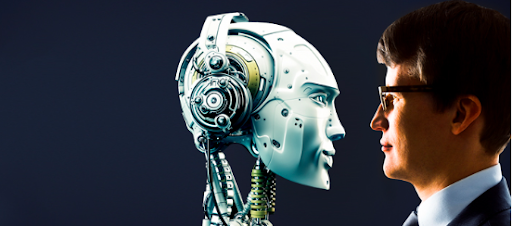
As technology continues to advance at an unprecedented pace, there is growing concern about the impact of automation on the future of work in terms of humans Vs. robots. With robots and other forms of artificial intelligence (AI) becoming increasingly capable of performing tasks previously done by humans, many worry that automation will lead to widespread job loss and economic disruption.
While there is no doubt that automation will change the nature of work, it’s important to remember that it’s not an all-or-nothing proposition. Rather than pitting humans against robots, we need to find a balance that maximizes the benefits of automation while minimizing its negative impacts.
One potential solution is to focus on tasks best suited to humans, such as creative problem-solving, complex decision-making, and interpersonal communication. These tasks require skills that are uniquely human, such as empathy, intuition, and emotional intelligence, and are less likely to be automated in the near future.
At the same time, we can leverage automation to improve efficiency and productivity in areas better suited to machines for humans vs. robots, such as repetitive, routine tasks. This can free human workers to focus on higher-level tasks requiring more creativity and critical thinking.
However, finding this balance is easier said than done. It requires a concerted effort from businesses, governments, and workers to invest in education and training programs that equip people with the skills they need to succeed in a rapidly changing job market. It also requires a willingness to adapt to new technologies and embrace new ways of working.
One potential solution is implementing policies that support workers through the transition to automation. For example, governments can invest in retraining programs that help workers develop new skills and transition to new careers. Businesses can offer flexible work arrangements and other benefits that support workers who are adapting to new technologies and ways of working.
Here are some additional points to consider in the debate of humans vs. robots in the future of work:
Collaboration: One potential solution is to focus on collaboration between humans and robots. By leveraging the strengths of both, we can create a more efficient and productive workforce. For example, robots can handle repetitive tasks, while humans can provide the creativity and problem-solving skills needed for more complex tasks.
New job opportunities: While automation may displace some workers, it can also create new job opportunities in areas like software development, data analysis, and AI research. By investing in education and training programs, we can prepare workers for these new jobs and ensure that they have the skills they need to succeed in a rapidly changing job market.
Social benefits: Automation can also have social benefits, such as reducing the risk of workplace injuries and improving working conditions. By automating dangerous or repetitive tasks, we can create safer and more comfortable work environments for human workers.
Economic impact: The economic impact of automation is complex and multifaceted. While it may lead to job displacement in some industries, it can also lead to increased productivity and economic growth in others. By carefully managing the transition to automation, we can minimize the negative impacts and maximize the benefits.
Ethical considerations: As with any new technology, there are ethical considerations to consider when it comes to automation. For example, we must ensure that robots are designed and programmed in a way that aligns with our values and ethical principles. We must also ensure that they do not perpetuate or amplify biases, discrimination, or inequality.
Cultural impact: Automation can also have a cultural impact, as it changes the way we think about work and our place in society. It can also impact social norms and expectations around work, such as the idea that work should be a central part of our identity and self-worth. It is important to consider the cultural implications of automation and work to create a future where everyone can thrive.
Resilience and adaptability: The ability to adapt to new technologies and ways of working will be a critical skill in the future of work. As automation continues to advance, workers will need to be resilient and adaptable in order to stay relevant and succeed in their careers. This requires a mindset of lifelong learning and a willingness to embrace change.
Global impact: Automation is a global phenomenon, and its impact will be felt around the world. It is important to consider the global implications of automation and work to create a future where everyone has access to the benefits of automation and the opportunity to thrive.
Privacy and security: As automation becomes more prevalent, it will also raise questions about privacy and security. For example, robots and AI systems may collect and store sensitive information about individuals, raising concerns about data privacy and security. It is important to consider these issues and work to develop policies and regulations that protect the rights and interests of individuals.
Environmental impact: Automation can also have an environmental impact, both positive and negative. For example, it can help reduce energy consumption and greenhouse gas emissions by making production and transportation more efficient. On the other hand, it can also contribute to environmental degradation if not managed properly. It is important to consider the environmental implications of automation and work to create a future that is sustainable and environmentally responsible.
In conclusion, the debate of humans vs. robots in the future of work is a complex and multifaceted issue. By considering the various factors involved, we can work to create a future of work that is efficient, equitable, and sustainable. This will require a concerted effort from businesses, governments, and workers to invest in education and training, adapt to new technologies and ways of working and prioritize the well-being of individuals and the environment.
